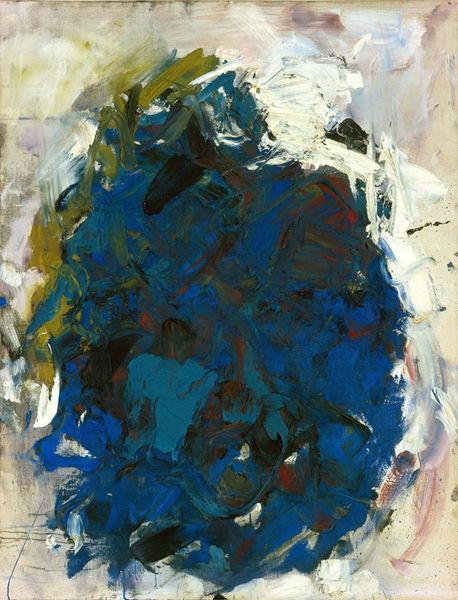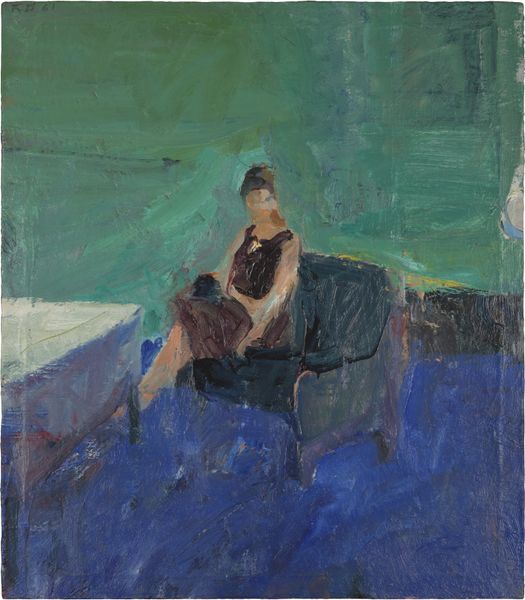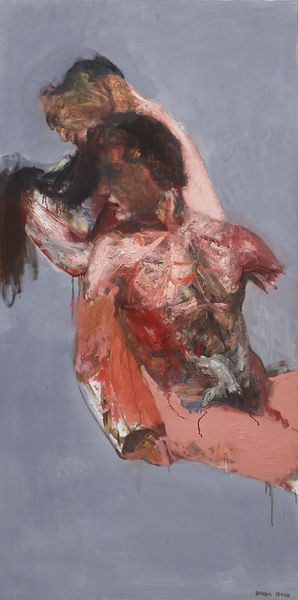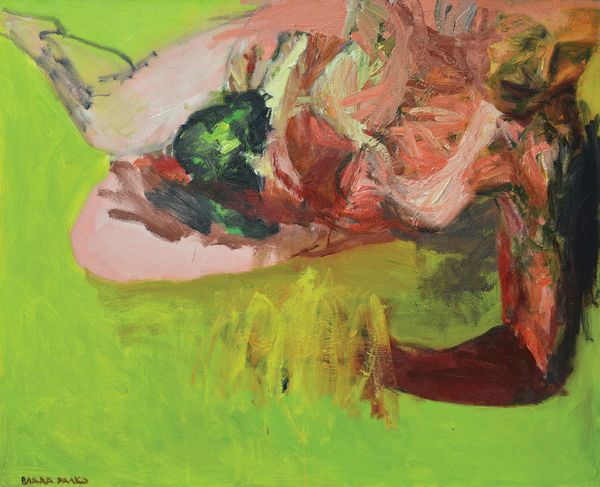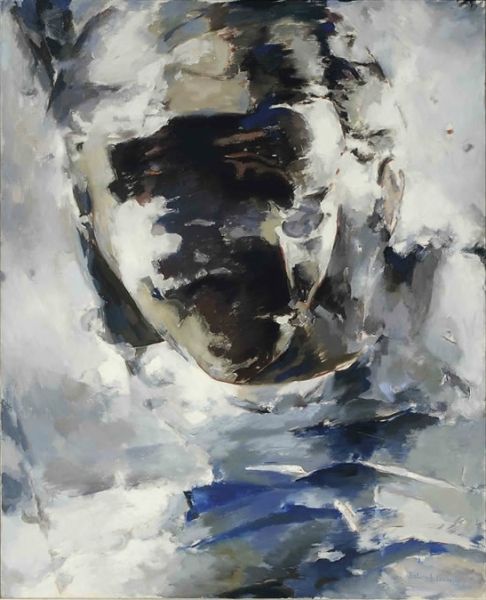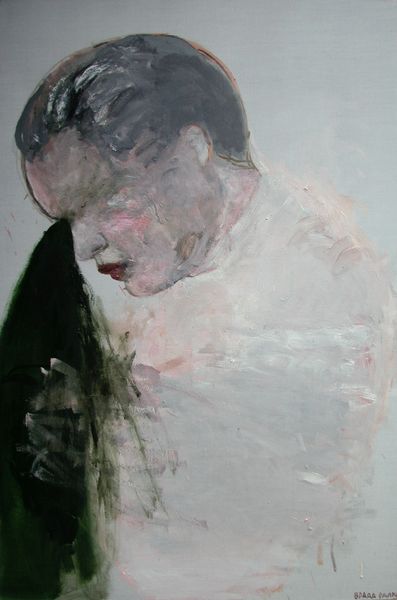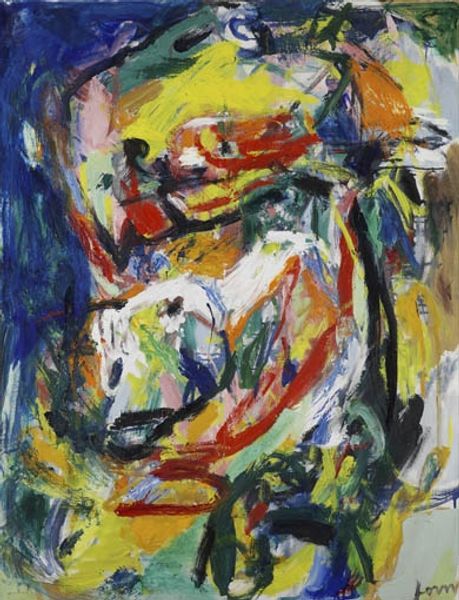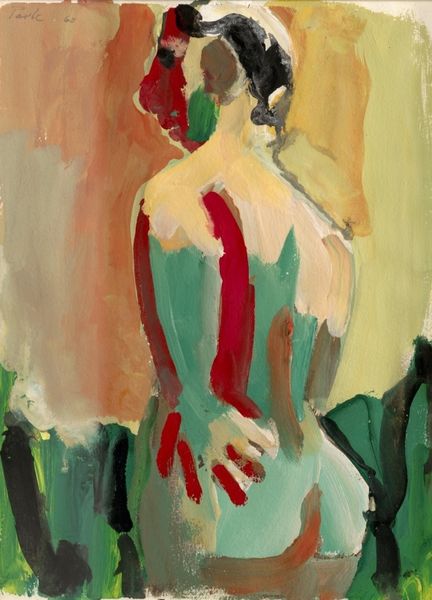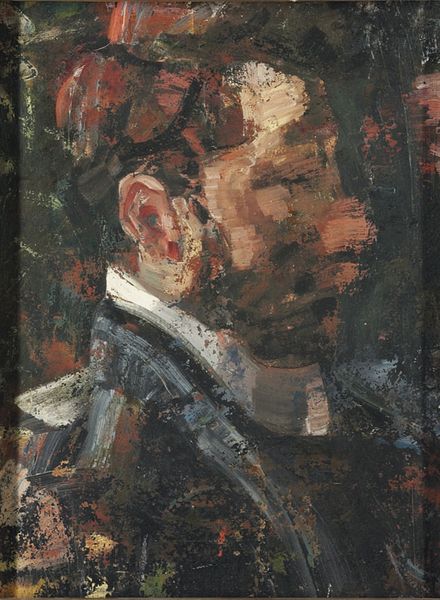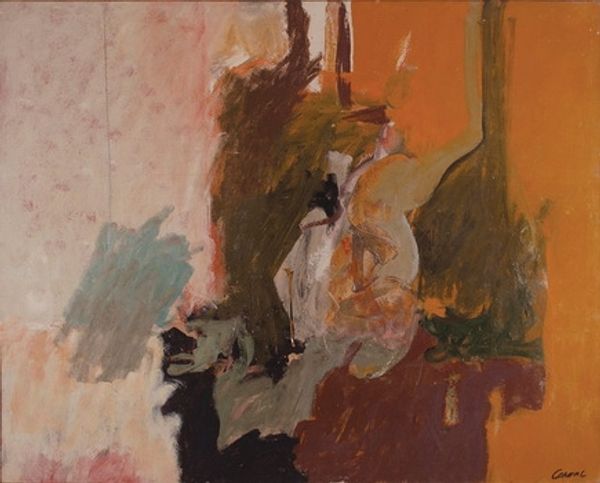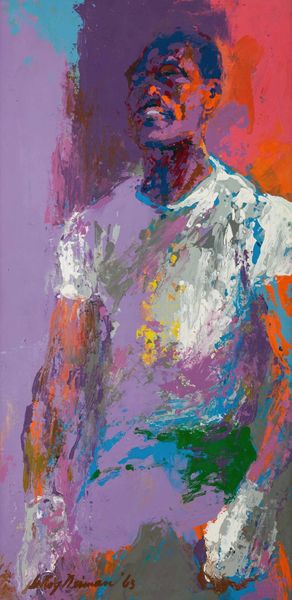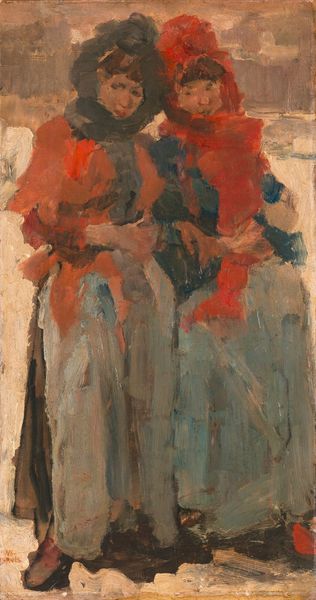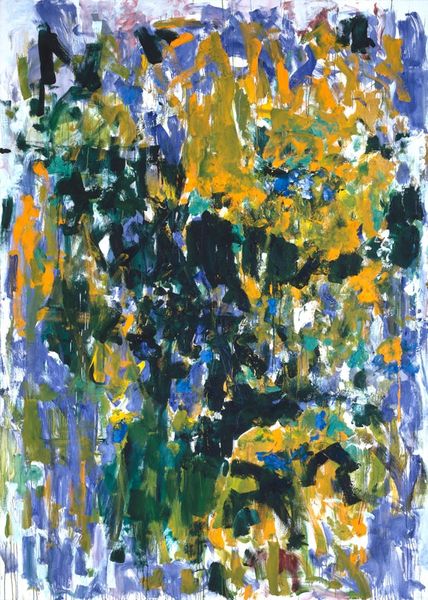
Copyright: Vlada Ralko,Fair Use
Curator: We’re looking at "Wait for Me Here" by Vlada Ralko, an oil painting from 2006. My first impression is… melancholy. A figure, or suggestion of one, emerges from a murky background. It feels like a half-remembered dream. Editor: Yes, a poignant piece. The brushstrokes are so visceral, you can almost feel the weight of the oil paint on the canvas. Considering Ralko’s body of work, it's hard not to read this through the lens of sociopolitical anxieties of post-Soviet Ukraine. Curator: You see that fragility in the materials themselves? The thick impasto and muted colors—greens, grays—almost give a sense of decay. Like something being unearthed, or perhaps slowly fading away. It evokes a raw kind of process, laboring to come forth but already fading. Editor: Exactly! It speaks to the precarity of identity, the feeling of being caught between different worlds, different historical narratives. The figure seems to be suspended, caught in a moment of expectation, that “wait” isn’t passive. It’s active; a struggle. Consider what she asks from us as the viewers as she commands this “wait”. Who is waiting? Who are we asked to await? Curator: The title takes on another layer with that in mind, a loaded imperative to “Wait for Me Here” implying there’s a shared experience, almost, maybe a shared struggle against dissolution and displacement. But the fact that it’s oil paint too - so traditionally associated with power and permanence – being used to depict such uncertainty seems rather interesting in its process. Editor: Right. The act of painting becomes a site of resistance. The figure isn’t neatly defined; it's fragmented, questioning those very concepts of stable representation. What are the gendered and raced expectations when such forms emerge in art? Curator: The choice of oil becomes quite important, with the lengthy drying time it forces an endurance and acceptance, but on the other hand we return back to my impression of slow decay with those muddied shades. It might give the appearance of decay or suggest the slow churn of oil’s geologic formation, something literally pulled up from beneath the earth that embodies its temporality and the deep time that is expressed. Editor: Looking at it now, “Wait for Me Here” invites conversations, with an appeal that's intensely relevant today given continuous displacement and migration in the area and across the world. The painting provides the need to reckon with how we perceive and engage in relation to political uncertainty and hope. Curator: Ultimately, it's a meditation on process that encapsulates not just creation but time as a raw material and social conditions being translated materially into the finished work. Editor: Precisely. The waiting becomes a powerful act in its own right.
Comments
No comments
Be the first to comment and join the conversation on the ultimate creative platform.
